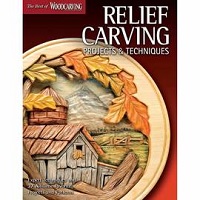CHAPTER XVI
MUSEUMS
False Impressions Fostered by Fragmentary Exhibits - Environment as Important as Handicraft - Works Viewed as Records of Character - Carvers the Historians of their Time.



A new world of commerce and machinery, having slain and forgotten a past race of artist craftsmen, makes clumsy atonement by sweeping together the fragments of their work and calling the collection a museum.
From the four corners of the earth these relics have been gathered. Our hungry minds are bidden to make choice according to fancy, for here is variety of food! Here are opportunities, never before enjoyed by mortal, for an intellectual feast!—and of a kind which might be considered god-like, were it not for the suspicion of some gigantic joke. That out of all this huge mass of chaotic material we have not as yet been able to make for ourselves some living form of art, must indeed be to the gods a continual subject of merriment.
Museums of art are in no respect the unmixed blessings which they appear to [150] be. They have, to be sure, all the advantages of handy reference; but at the same time, on account of the great diversity in the character of their exhibits, they tend to encourage the spread of a patchy kind of knowledge, far from being helpful to the arts in the interests of which they are established. It must be remembered that, in these collections, all specimens of architecture and architectural carving are invariably seen in false positions. All have been wrenched from their proper settings, and placed, more or less at random, in lights and relationships never contemplated by their designers.
To the environment of a piece of architecture, and the position and surroundings of carved decorations, are due quite half of their interest as works of art. Deprive them of these associations, and little is left but fragmentary specimens of handicraft, more or less unintelligible in their lonely detachment, misleading to the eye, and dangerous as objects of imitation, in proportion to the dependence they once had upon those absent and unknown associations.
The educational purpose which these collections are intended to serve is liable to be construed into an unreasoning assumption [151] that every specimen exhibited is equally worthy of admiration. How often the plodding student is to be seen carefully drawing and measuring work of the dullest imaginable quality, with no other apparent reason for his pathetically wasted industry!
It would be strange, indeed, if all in this vast record of past activity was of equal value; if merely to belong to the past was a sure warrant that such work was the best of its kind. Far from this being the case, it requires the constant use of a more or less trained and critical judgment to separate what is good from the indifferent or really bad in these collections, for all are usually present. There is inequality in artistic powers, in technical skill, and a distinction of yet greater importance, which lies in the significance the works bear as records of the inner life of their creators. Artists, carvers in particular, are the true scribes and historians of their times. Their works are, as it were, books—written in words of unconscious but fateful meaning. Some are filled with the noblest ideals, expressed in beautiful and serious language, while others contain nothing but sorry jests and stupidities. [152]
As all the works of the past, whether good or bad, are the achievements of men differing but little from ourselves, save in the direction of their energies and in their outward surroundings, there is surely some clue to the secret of their success or failure, some light to be thrown by their experience upon our own dubious and questioning spirit.
What better could we look for in this respect than a little knowledge of the lives led by the carvers themselves, a mental picture of their environment, an acquired sense of the influence which this, that, or the other set of conditions must have imposed upon their work. With a little aid from history in forming our judgments, their works themselves will assist us—so faithful is the transcript of their witness—for, with more certainty than applies to handwriting, a fair guess may be made by inference from the work itself as to the general status and ideals of the workman. The striking analogy between its salient characteristics and the prevailing mood of that ever-changing spirit which seeks expression in the arts, is nowhere more marked than in the work of the carver. [153]

|
INFORMATION ABOUT HOW TO MAKE MONEY FROM WOOD CARVING |